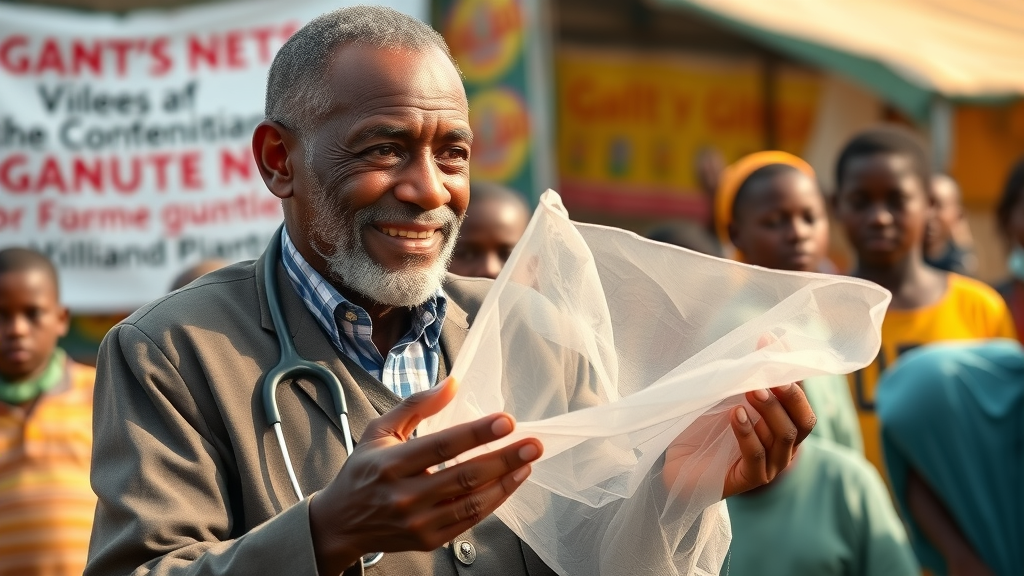Did you know that Africa loses billions of dollars yearly to infectious diseases, with Uganda witnessing thousands of new malaria and HIV/AIDS cases each day? Such staggering statistics reveal how deeply infectious diseases shape daily life and public health in Uganda and across the continent. This article will take you inside the world of epidemeology insights from Case Clinic News—unveiling not only the fundamental science and hidden social factors behind disease outbreaks, but also the impactful efforts of Uganda’s Case Hospital and Case Medcare Services over 30 years of cutting-edge care, research, and community outreach. Whether you’re a Ugandan resident, healthcare worker, traveler, or simply curious, you’ll gain vital knowledge to help protect yourself and your community.
Opening Insights: The Hidden Dynamics of Epidemeology Explored
Startling fact: Recent reports show over 13,000 incident cases of infectious diseases each day in Uganda, placing it among Africa’s highest-burden countries. This includes a wide range of diseases such as malaria, HIV/AIDS, and tuberculosis.

Unconventional statistics: In the last decade alone, the number of cases for emerging diseases like Ebola and COVID-19 has tripled, prompted by urbanization, climate shifts, and cross-border migration. Despite this, Uganda’s public health departments—backed by Case Hospital and Case Medcare—have launched more than 50 outbreak investigations and emergency responses in the past year.
What You'll Learn: Key Takeaways from Epidemeology Insights from Case Clinic News
A clear understanding of epidemiology and its importance for Uganda’s public health.
Identification of the three major links in disease occurrence — agent, host, and environment — and why they matter.
How Case Clinic and Case Medcare Services are advancing infectious disease management through innovative outreach, research, and care.

The evolving landscape of key infectious diseases (HIV/AIDS, malaria, tuberculosis, Ebola, COVID-19) currently impacting Uganda and Africa.
Effective control and prevention strategies, including real-life lessons from recent outbreak investigations spearheaded by Ugandan health departments and Case Medcare outreach teams.
What is Epidemiology? Foundations and Critical Concepts
Defining Epidemiology: Scope and Importance

Epidemiology is the study of how diseases affect a population—tracking who gets sick, why, and how disease spreads. Uganda’s task is massive, as infectious diseases continue to pose both local and continental threats. Epidemiologists in Uganda work closely with the school of public health, public health departments, and health service providers like Case Hospital to identify causes, risk factors, and control measures for both infectious and chronic diseases.
Understanding the occurrence of disease not only supports outbreak detection but also helps in shaping preventative strategies. Their research covers the period of time a disease is present, studying trends, mortality rates, and evaluating interventions from vaccination to sanitation improvements. Armed with this evidence, Uganda can better allocate resources, react swiftly to outbreaks, and educate communities on reducing their exposure to disease.
The Role of Epidemiology in Outbreak Investigation and Control
At the front lines during epidemics—like Ebola, COVID-19, or malaria resurges—are epidemiologists using outbreak investigation tools to rapidly track, analyze, and contain disease. In Uganda, they collaborate with health departments and international partners (like the centers for disease control and prevention) to launch quick responses when disease outbreak signals arise. They define cases, measure how many people are at risk, and look for patterns or potential risk factors across communities.
Their work not only prevents widespread epidemics but informs national regulations and guides hospitals such as Case Hospital in deploying resources most effectively. Recent success in mitigating Ebola transmission and flattening COVID-19 curves owe much to this proactive, science-driven approach—a hallmark of robust public health systems.
Key Epidemiological Measures: Understanding Disease Frequency
Measuring disease presence and spread relies on key concepts—incidence, prevalence, and mortality rate. Incidence counts the number of new cases over a set period of time, while prevalence shows the total cases (old and new) at a specific moment. Mortality rate highlights how deadly a disease is within the population. When combined with cohort study or control study methods, these numbers allow organizations like Uganda’s health department to spot trends, allocate resources, and develop outreach programs for maximum effect.
Comparison of Epidemiology Definitions, Tools, and Core Applications | ||
Aspect |
Definition |
Uganda Application |
|---|---|---|
Incidence |
New cases within a specific period of time |
Used to monitor malaria outbreaks in Kampala |
Prevalence |
Total cases in a given population at a time |
Tracks HIV/AIDS rates in high-risk regions |
Mortality Rate |
Deaths caused by a disease within a population |
Assesses fatality trends of tuberculosis |
Outbreak Investigation |
Finding causes and patterns of sudden health events |
Ebola case tracing in rural districts |
Risk Factors |
Variables increasing disease likelihood |
Smoking and HIV/AIDS, contaminated water and cholera |
The Three Major Links in Disease Occurrence: A Deep Dive
Agent: The Essential Cause of Infectious Diseases
The agent is the microorganism—such as bacteria, viruses, parasites, or fungi—that directly causes disease. In Uganda, high-profile agents include the HIV virus, malaria parasite (Plasmodium), and Ebola virus. Monitoring the characteristics (resistance, infectious dose, mutation rates) of these agents is critical to outbreak investigation and response. When agents evolve, they can bypass health defenses—necessitating both rapid scientific advancements and updated control strategies from organizations like Case Hospital.
Host: The Human and Biological Factors Shaping Epidemics

The host refers to the people at risk—whose age, immunity, genetics, health habits, and socioeconomic status affect susceptibility. Children, the elderly, or those with chronic disease are often most vulnerable to a wide range of infectious diseases. In Uganda, crowded urban settlements, malnutrition, and gaps in vaccination further raise risks. Initiatives like hand washing, improved nutrition, and accessible medical care (as promoted by Case Medcare outreach) help strengthen the host’s defenses, demonstrating how societal and individual actions can alter epidemic courses.
Environment: The Contexts That Enable Disease Transmission
The environment includes everything outside the host and agent that influences disease transmission. In Uganda, rainfall patterns create ideal breeding for malaria-carrying mosquitoes, while poor sanitation fuels cholera. Rapid urbanization adds new layers of complexity, enabling both person to person spread and transport-related outbreaks. Effective public health hinges on recognizing these environmental variables—so outbreak investigations routinely analyze water, markets, transportation, and living conditions to uncover hidden drivers of disease.
Ebola’s spread in western Uganda has been tied to traditional burial practices and cross-border travel.
Malaria rates spike after seasonal floods in eastern districts with stagnant water.
Tuberculosis thrives in densely populated city neighborhoods with inadequate ventilation.
Breakdown of the Three Major Components of Epidemiology with Case Illustrations | ||
Component |
Description |
Ugandan Example |
|---|---|---|
Agent |
Microbe that causes the disease |
HIV virus, Ebola virus, Plasmodium parasite |
Host |
Human at risk, exposure factors |
Immunocompromised patient exposed to tuberculosis |
Environment |
External conditions aiding spread |
Stagnant water breeding malaria mosquitoes |
Outbreak Investigation in Epidemiology: Real Cases and Lessons from Uganda
Critical Steps in Outbreak Investigation

Responding swiftly to disease outbreaks requires a structured approach. Ugandan epidemiologists and public health teams collaborate with agencies like the health department to:
Define the outbreak (number of cases above normal)
Verify diagnosis through laboratory confirmation
Establish a case definition and identify affected populations
Conduct active and passive case finding
Analyze key data—such as incubation period and geographical clusters
Test hypotheses using cohort studies or control studies
Implement control measures (vaccination, quarantine, water purification)
Communicate findings to communities and policymakers
Case Clinic News: Documented Outbreaks and Public Health Responses
Case Clinic and Case Medcare Services have been at the forefront of outbreak investigation and response in Uganda. Their documented successes include rapid mobilization during the 2019 Ebola threat, effective HIV/AIDS management programs, and hands-on community education for malaria prevention. Their approach blends modern medical interventions, real-time surveillance, and traditional knowledge—fueling better preparedness and bolstering trust within local communities.
Incubation Periods and Their Impact on Control and Prevention
Incubation period—the time between infection and symptom onset—varies significantly between diseases. Ebola’s short incubation allows for rapid containment if detected early, while HIV’s longer asymptomatic phase poses unique public health challenges, often leading to inadvertent person to person transmission. Accurate knowledge of incubation periods supports targeted quarantines, vaccination timing, and the design of effective disease control protocols throughout Uganda.
"Epidemiology is as much about prevention as understanding, a lesson we apply daily in Uganda." – Case Hospital Doctor
Control and Prevention: Strategies to Combat Infectious Diseases
Case Medcare Services’ Initiatives in Uganda: 30 Years of Impact

For over 30 years, Case Medcare Services in Uganda has pioneered disease control and prevention. Their comprehensive outreach encompasses malaria vector control, HIV/AIDS testing and treatment, tuberculosis screening, and Ebola preparedness. Through partnerships with the school of public health, integration of community health volunteers, and coordination with health departments, they have reduced mortality rates and educated millions. Their model now serves as a best-practice example for the rest of Africa.
AIDS Management and Other Key Infectious Diseases: Progress and Ongoing Challenges
HIV/AIDS: Leading cause of premature death in Uganda. Through aggressive awareness campaigns, antiretroviral distribution, and destigmatized counseling, Case Medcare has cut transmission in half in serviced districts over the last decade.
Malaria: Still responsible for thousands of hospitalizations monthly. Free mosquito net distributions and indoor spraying have made significant dents in the number of cases.
Tuberculosis (TB): High co-infection rates with HIV require integrated care efforts.
Ebola: Outbreaks swiftly contained due to rapid detection, rigorous screening at borders, and community engagement.
COVID-19: Leveraged digital outreach and decentralized testing, increasing detection and treatment rates.
Role of Traditional and Modern Approaches in Disease Control
Uganda’s strategy success lies in harmonizing modern epidemiological science with trusted local practices. While Case Hospital deploys the latest treatments and diagnostics, outreach teams support home-based care, health talks during communal gatherings, and traditional herbal remedies vetted for safety. This dual approach respects Uganda’s diverse cultures and maximizes community buy-in, making each control measure—from vaccinations to isolation—more effective.
Summary of Prevention and Control Strategies by Case Hospital and Medcare | ||
Strategy |
Implementation |
Impact |
|---|---|---|
Vector Control |
Distribution of mosquito nets; indoor residual spraying |
30% drop in reported malaria cases (2018-2023) |
HIV/AIDS Management |
Accessible antiretroviral therapy, testing centres, youth outreach |
Community transmission rates halved in districts served |
Outbreak Rapid Response |
Mobile testing units, border surveillance, emergency radio campaigns |
Early containment of Ebola and COVID-19 surges |
Health Education |
Community seminars, patient support groups, media campaigns |
Improved vaccination rates (up to 70%) and hygiene compliance |
Epidemeology Insights from Case Clinic News: Advancements in Disease Eradication and Care
Technological and Community-Based Interventions

Advancements in digital health are transforming Uganda’s disease control landscape. Case Hospital and Medcare utilize mobile apps for reporting outbreaks, SMS-based appointment tracking, and solar-powered health stations for remote villages. These innovations enable real-time data sharing between health staff and the school of public health. Community engagement—local leaders, church groups, and peer educators—amplifies the reach of public health messages, improving trust and uptake of preventative measures.
Public Education: What Every Ugandan Needs to Know
Community empowerment lies at the heart of epidemiology insights from Case Clinic News. Ugandans are encouraged to stay informed, practice safe health behaviors, and seek professional care early. Public campaigns stress the importance of hand hygiene, mosquito net use, HIV testing, TB screening, and reporting unusual health events to local clinics—vital steps for reducing risk factors and saving lives.
Wash hands regularly with soap and water.
Sleep under insecticide-treated mosquito nets.
Avoid crowds during outbreaks and follow local advisories.
Seek HIV or TB testing if at risk; attend follow-up clinics.
Report fever or unusual symptoms to the nearest health center immediately.
"We educate and empower communities, because prevention starts with awareness." – Case Medcare Outreach Team
People Also Ask: The Most Searched Epidemiological Questions
What are the three major components of epidemiology?
Answer: The agent (microorganism causing the disease), the host (the at-risk human or animal), and the environment (conditions aiding transmission)—illustrated daily across Uganda as Ebola, malaria, and TB outbreaks are tackled by integrating all three factors.
What are three examples of diseases that are epidemiology significant?

Answer: HIV/AIDS, malaria, and Ebola. For example: Uganda’s last Ebola outbreak (2022) saw 164 confirmed cases; HIV/AIDS remains a leading cause of death with over 1.4 million people living with the virus; malaria accounts for over a million clinical consultations yearly. Intensive interventions from Case Medcare have dramatically improved outcomes for these conditions.
What are the three epidemiological measures of disease frequency?
Answer: Incidence (new cases in a period of time), prevalence (total living cases at a given moment), and mortality (deaths attributed to the disease). Recent Case Hospital studies show a drop in malaria incidence and stabilized HIV prevalence in Kampala following robust intervention campaigns.
What do epidemiologists identify three major risk factors for disease which are called?
Answer: Behavioral (e.g., unprotected sex, unsafe injections), environmental (e.g., standing water, poor sanitation), and genetic factors (e.g., inherited susceptibility to TB). Ugandan studies reported by Case Clinic News highlight unsafe water sources and low vaccination as key modifiable risks.
Epidemeology Insights Case Clinic News Video Resources
Featured Documentary: Epidemiology in Action at Case Hospital Uganda
Video walkthrough: Go behind the scenes with Case Medcare’s infectious disease clinics for a day—see health checks, outbreak planning, and dynamic community outreach from an epidemiological perspective.
Key Takeaways: Applying Epidemeology Insights from Case Clinic News
Utilize early detection and prompt care for fever or outbreaks.
Participate in local health education campaigns run by Case Medcare and the ministry of health.
Reduce risk factors by using treated nets, practicing hand hygiene, and supporting environmental cleanliness.
The research and commitment of Case Clinic and Medcare over 30 years remain critical to Uganda’s ongoing fight against infectious diseases, setting a benchmark for control and prevention in Africa.
Frequently Asked Questions (FAQs): Epidemeology and Infectious Disease in Uganda
What services does Case Medcare provide to travelers and locals in Uganda?
Case Medcare offers vaccine counseling, malaria prophylaxis, emergency response, remote health checks, and 24/7 access to infectious disease experts. Their urgent care and prevention packages are tailored for both travelers and residents.How does outbreak investigation inform public health policies?
Outbreak investigations identify key risk factors and effective interventions, allowing policymakers to design targeted responses, upgrade health services, and set regulations that save lives.What recent breakthroughs have enhanced disease control in Uganda?
Mobile health tech, rapid diagnostic tools, community health volunteer networks, improved vaccination drives, and digital surveillance systems have revolutionized early detection and containment of outbreaks.
Conclusion: The Future of Epidemiology Insights from Case Clinic News in Uganda
Reinforcing the central role of epidemiology in improving public health and reducing disease burden in Uganda.
With Case Hospital’s leadership and continuous innovation, the outlook for controlling infectious diseases in Uganda grows ever brighter.

Discover Case Clinic Medcare Services When Traveling To Uganda
Explore innovative preventative and care solutions at https://casemedservices.org
Video Library: Quick Visual Guides to Epidemeology Insights

Sources
Epidemiology is the study of the distribution and determinants of health-related states or events in specified populations, and the application of this study to control health problems. (archive.cdc.gov) Central to this field is the epidemiologic triad, which comprises three major components:
Agent: The cause of the disease, such as bacteria, viruses, parasites, or other pathogens.
Host: The organism, typically a human, that harbors the disease. Factors like age, sex, genetic predisposition, and immune status can influence susceptibility.
Environment: External factors that affect the agent and the opportunity for exposure, including physical, biological, social, and economic elements.
Understanding the interplay between these components is crucial for identifying risk factors and implementing effective public health interventions. (archive.cdc.gov)
 Add Row
Add Row  Add
Add 



Write A Comment